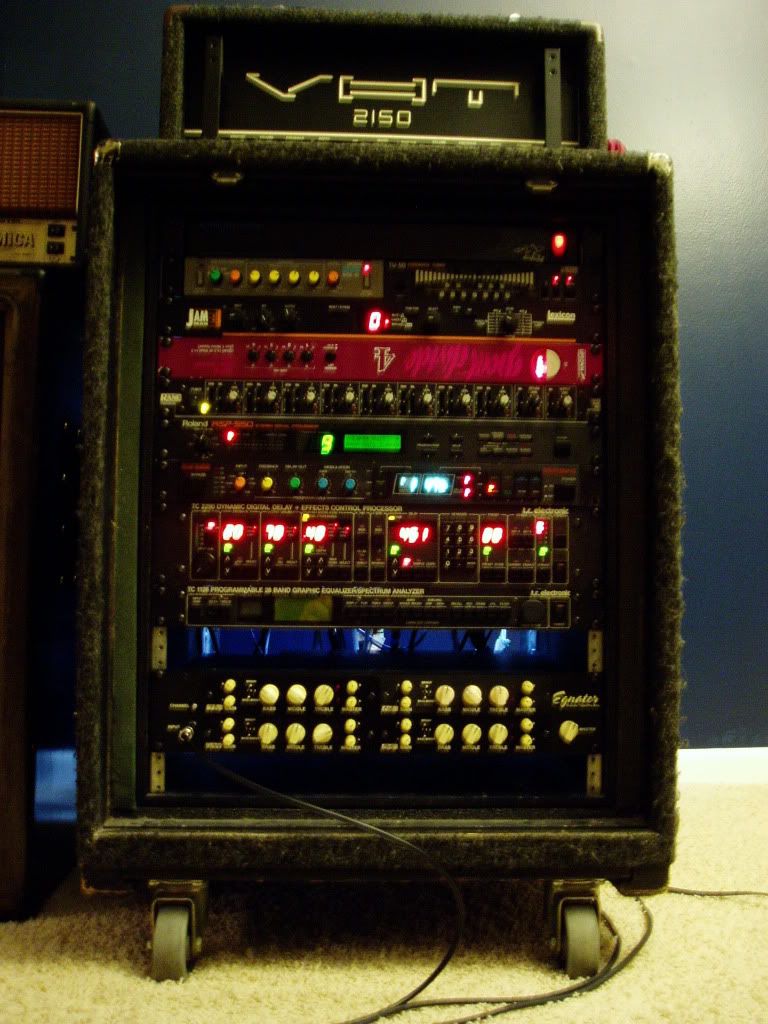they provide versatility, advanced tonal options and routing options, and allow W/D/W setups to be built.
for W/D/W explanation - search the forum. thats a whole different topic in itself.
basically your amplifiers have a preamp section, and a poweramp section all in one amplifier, with some upper end models with an effects loop to insert effects after the preamp and guitar tones. you also have pedals that you insert into your signal chain even before the preamp.
racks allow you to take all of this into pieces and build a setup with the best of all preferred worlds into one unit - and then allow full control over that unit with the push of a button to eliminate pedal "dancing" with pedal boards and effects loop switches.
- it allows you to program MIDI patches with a controller unit of some sort (RJM16, GCX, etc)
- control your pedals all at once or individually without dancing all over the place and/or -
- control effects processors (which combine effects into a single unit [albeit not all racks sound the same as pedals...which choice or either choice depends on taste])
- control your amplifier channel (RJM allows you to do this, another controller called an amp gizmo does this as well) and only have 1 MIDI pedal in front of you at the mic stand to controll ALL of it with the push of a button and also switch whatever you please in that MIDI programmed patch of settings on or off as well (for solo boosts, mixing options, etc)
when i say patch, a patch is a saved setting. inside that patch you can edit anything you like, save that change update it this way whenever you like. if you dont save the changes, after you make the changes, then you can recall that patch later in the show and nothing would have changed (solo boosts on or off, chorus on in a certain part of the song, etc)
a bank is a set of patches, so a set list would be a (bank) of patches (songs) in the order that you want them

series parallel control is also a big deal, and in racked setups - you have the ability to split your signal chain effects into left and right channels and control those effects independently from one another. if you ever listen to a car stereo, guitars are usually panned left - bass panned right, or a mix of both. a rack allows advanced control of left and right channel effects for a much fuller sound and control - the same way a recorded CD does the same thing with post-production recordings of bands.
very versatile. i prefer a mix of amplifiers, rack, pedals, and racked effects all in one. they all have their place





















